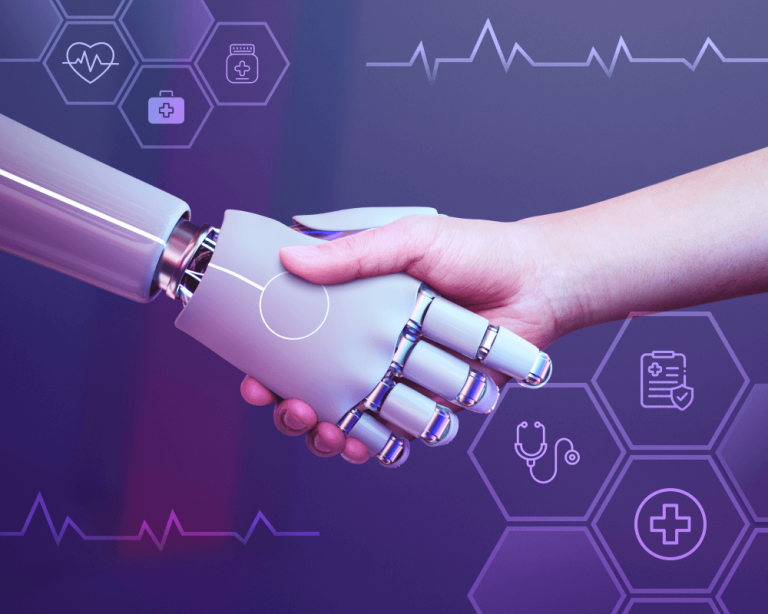May 30, 2023 By: JK Tech
Introduction:
In the fast-paced world of healthcare, the integration of cutting-edge technologies is vital to enhance patient care and improve outcomes. One such technology making waves is the concept of digital twins. Initially popularized in industries like aerospace and manufacturing, digital twins are now finding their way into healthcare, revolutionizing simulation-based learning and precision medicine. The global market for healthcare digital twins was valued at USD 462.6 million in 2021, and Grandview research projects that it would increase at a CAGR of 25.6% from 2022 to 2030. In this blog, we will explore the potential of digital twins in healthcare, considering their benefits, implementation challenges, and regulatory considerations.
Increasing Learning Possibilities in Virtual Environments:
Digital twins are virtual representations of physical objects, processes, or systems. In the context of healthcare, they can simulate complex anatomical structures, medical devices, and patient-specific conditions. According to an article by HealthySimulation.com, digital twins offer expanded learning opportunities for healthcare professionals by enabling immersive, realistic, and risk-free simulations. These simulations can be used for training medical students, testing surgical techniques, and enhancing clinical decision-making skills.
Statistics show that healthcare professionals who utilize digital twins for simulation-based training experience improved performance and increased confidence. Based on a study, 90% of surgical trainees reported enhanced understanding and skill development when using digital twin simulations. Such positive outcomes highlight the immense potential of digital twins in transforming medical education.
Tools for Precision Medicine:
Digital twins are not limited to simulation-based learning; they also hold great promise in the realm of precision medicine. Based on an article digital twins can be used to create patient-specific models that capture individual physiological and genetic characteristics. By integrating data from electronic health records, genetic profiles, and wearable devices, healthcare providers can generate accurate and personalized predictions for diagnosis, treatment planning, and disease management.
The article emphasizes that digital twins have the potential to revolutionize precision medicine by enabling clinicians to tailor interventions to each patient’s unique characteristics. By adopting a personalized approach, there is considerable potential to enhance patient outcomes and decrease healthcare expenses. In fact, the same article stated that implementing digital twins in healthcare could potentially lead to a 35% reduction in hospital stays and a 20% decrease in healthcare costs.
Accelerating Healthcare Transformation:
The healthcare industry is undergoing a transformative journey, and digital twins can play a significant role in accelerating this process. An article on Forbes.com discusses how digital twins can empower patients to take control of their health by creating virtual representations of themselves at home. People can receive knowledge about their health status, keep track of chronic illnesses, and make wise decisions about their well-being by integrating data from wearable devices, lifestyle factors, and real-time physiological measures.
Furthermore, digital twins can also facilitate remote patient monitoring, enabling healthcare providers to offer proactive and personalized care outside of traditional clinical settings. This approach has become increasingly relevant, particularly in the wake of the COVID-19 pandemic, where telehealth and remote monitoring have gained widespread acceptance.
Considerations for Computation, Implementation, and Regulation:
While the potential of digital twins in healthcare is vast, several considerations need to be addressed. Some of the important topics that need attention are computationally demanding activities, data privacy issues, interoperability issues, and legal frameworks.
Collaboration between stakeholders is essential to the adoption of digital twins in healthcare. To establish standards, norms, and ethical frameworks that regulate the use of digital twins, researchers, healthcare practitioners, technology developers, and regulatory organizations must collaborate. This collaborative effort will ensure patient safety, data security, and regulatory compliance.
In conclusion, the integration of Digital Twins in Healthcare represents a significant leap forward in simulation-based learning and precision medicine. These virtual representations provide more learning opportunities, increase clinical judgment, and improve patient outcomes. By leveraging patient-specific data and advanced computational models, digital twins enable personalized interventions and empower individuals to take control of their health. However, successful implementation requires addressing computational challenges, data privacy concerns, interoperability issues, and regulatory considerations. Collaborative efforts among researchers, healthcare professionals, technology developers, and regulatory bodies are essential to establish standards and ethical frameworks that ensure patient safety and data security. As we continue to explore the potential of digital twins, we can expect a transformative impact on healthcare, leading to improved training, precision diagnostics, and personalized treatments for better patient care.



